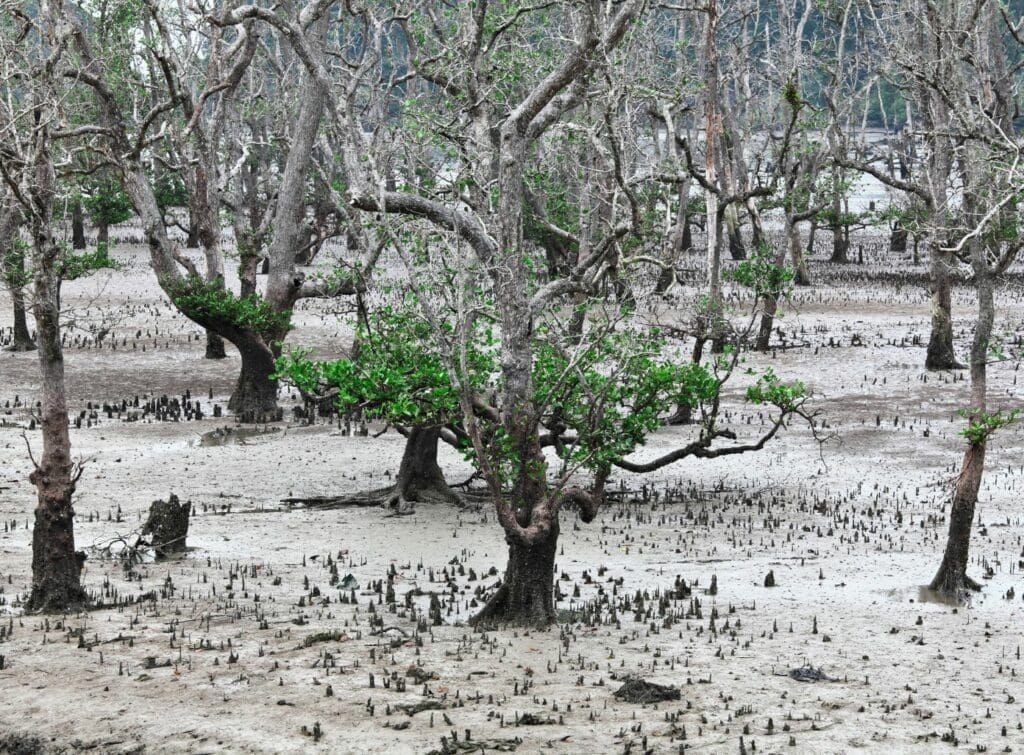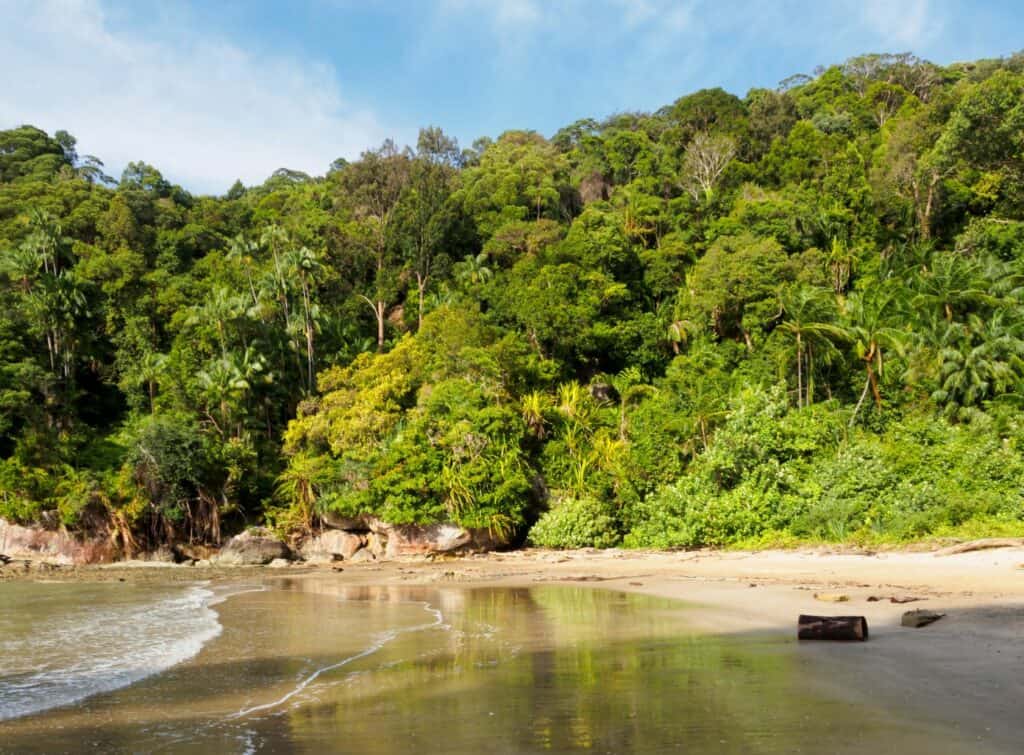If you’re looking for a day trip filled with adventure and natural beauty, look no further than Bako National Park. Located in Malaysia, this stunning national park is a haven for nature lovers and outdoor enthusiasts. From its rich history to its diverse flora and fauna, there is so much to explore and discover in this hidden gem.
Getting to Know Bako National Park

Before diving into the details of planning your day trip, let’s take a moment to understand the background and significance of Bako National Park. Established in 1957, it is one of the oldest national parks in Sarawak, Malaysia. Spanning over 27 square kilometers, the park is home to lush rainforests, towering cliffs, and pristine beaches.
History of Bako National Park
Bako National Park has a rich cultural and historical heritage. It was originally a fishing village, and its transformation into a protected national park is a testament to Malaysia’s commitment to preserving its natural wonders. Over the years, efforts have been made to conserve the park’s unique ecosystem and promote sustainable tourism.
The park’s history dates back centuries, with evidence of human habitation found in the form of ancient burial sites and rock paintings. These artifacts provide a glimpse into the lives of the indigenous communities that once thrived in this area. Today, Bako National Park stands as a symbol of the country’s dedication to preserving its natural and cultural heritage.
Flora and Fauna of Bako National Park
One of the highlights of visiting Bako National Park is the opportunity to witness its incredible biodiversity. The park is home to a wide range of plant and animal species, some of which can only be found in this region. From the towering dipterocarp trees to the elusive proboscis monkeys, there is always something fascinating to see.
The rainforests of Bako National Park are teeming with life. The dense vegetation provides a habitat for a variety of plant species, including orchids, pitcher plants, and ferns. These plants not only add to the park’s natural beauty but also play a crucial role in maintaining the delicate balance of the ecosystem.
As you explore the park’s trails, keep an eye out for the unique wildlife that calls Bako National Park home. The proboscis monkey, with its distinctive long nose and potbelly, is one of the most iconic species found here. Other primates, such as macaques and silver leaf monkeys, can also be spotted swinging through the treetops.
Bird enthusiasts will be delighted by the park’s avian residents, which include hornbills, kingfishers, and eagles. These colorful and majestic birds add a vibrant touch to the already picturesque surroundings. If you’re lucky, you may even catch a glimpse of the rare and endangered Bornean peacock-pheasant.
For those with an interest in reptiles, Bako National Park offers the chance to encounter various species of snakes, lizards, and turtles. The park’s coastline is also an important nesting ground for sea turtles, providing a safe haven for these ancient creatures to lay their eggs.
Whether you’re a nature lover, an adventure seeker, or simply looking for a peaceful escape from the hustle and bustle of city life, Bako National Park has something to offer. Its diverse flora and fauna, coupled with its rich history and breathtaking landscapes, make it a must-visit destination for anyone exploring Sarawak, Malaysia.

Planning Your Day Trip
Now that you have a better understanding of Bako National Park, let’s discuss the practical aspects of planning your day trip.
Best Time to Visit Bako National Park
The best time to visit Bako National Park is during the dry season, which typically runs from April to September. This is when the weather is most favorable, and you can enjoy the park’s outdoor activities without worrying about heavy rainfall. However, do keep in mind that the park can get crowded during peak season, so it’s advisable to plan your visit in advance.
Essential Items to Pack
When preparing for your day trip to Bako National Park, there are a few essential items you should pack. Be sure to bring comfortable walking shoes, insect repellent, sunscreen, a hat, and a refillable water bottle. It’s also a good idea to pack a raincoat or poncho in case of unexpected showers. Remember, it’s always better to be prepared!
Once you’ve made it to Bako National Park, it’s time to embark on your adventure. Here are some key tips to help you navigate the park and make the most of your day trip.
Popular Trails and Hikes
Bako National Park offers a variety of hiking trails, catering to different fitness levels and interests. The Telok Assam trail is a great option for beginners, offering a leisurely stroll through the park’s lush vegetation. For more experienced hikers, the Paku Trail offers a challenging but rewarding trek, leading to breathtaking views of the coastline.
Key Landmarks and Viewpoints
Throughout your hike, keep an eye out for key landmarks and viewpoints that offer stunning panoramas of the park. The famous Sea Stack, with its towering rock formations emerging from the sea, is a must-see. The Lintang Trail also leads to several vantage points where you can take in the park’s natural splendor.
Safety Measures in Bako National Park
While Bako National Park is a beautiful destination, it’s important to prioritize safety during your visit. Here are some essential guidelines to ensure a safe and enjoyable experience.
Wildlife Safety Guidelines
As you explore Bako National Park, you may encounter various wildlife species, including macaque monkeys and monitor lizards. It’s crucial to maintain a safe distance from the animals and never feed them. Remember, these are wild creatures, and their behavior can be unpredictable. Be respectful of their natural habitat and observe them from a reasonable distance.
Health and Hygiene in the Park
When visiting Bako National Park, it’s essential to prioritize your health and hygiene. Apply insect repellent to protect yourself from mosquito bites and wear appropriate clothing to prevent sunburn. Stay hydrated by drinking plenty of water and avoid littering to help preserve the park’s pristine environment. Additionally, it’s advisable to bring necessary medications and a basic first aid kit.
Sustainable Tourism in Bako National Park
Bako National Park offers a unique opportunity to experience the wonders of nature, and it’s important to do so responsibly. Here are some ways you can contribute to sustainable tourism during your visit.
Leave No Trace Principles
One of the core principles of sustainable tourism is to “leave no trace.” This means minimizing your impact on the environment by properly disposing of waste, refraining from damaging flora and fauna, and respecting park regulations. By following these principles, you can help preserve the natural beauty of Bako National Park for future generations.
Supporting Local Communities
When visiting Bako National Park, consider supporting local communities by purchasing locally made souvenirs or opting for eco-friendly accommodations. By supporting local businesses, you contribute to the economic growth of the area and help create a sustainable tourism industry.
In conclusion, a day trip to Bako National Park is an unforgettable experience that offers a perfect blend of adventure, natural beauty, and cultural heritage. With its rich history, diverse flora and fauna, and stunning landscapes, this national park is a must-visit destination for nature enthusiasts. By planning your trip well, prioritizing safety, and embracing sustainable tourism practices, you can truly enjoy all that Bako National Park has to offer. So pack your bags, lace up your shoes, and embark on an incredible journey into the heart of Malaysian wilderness.

